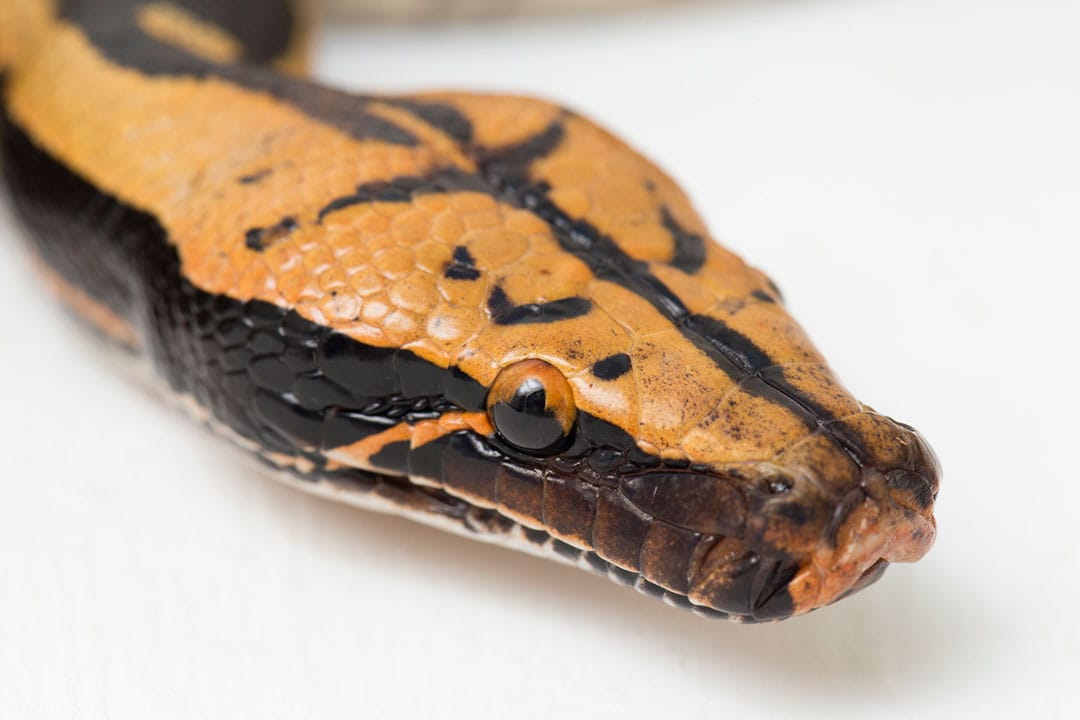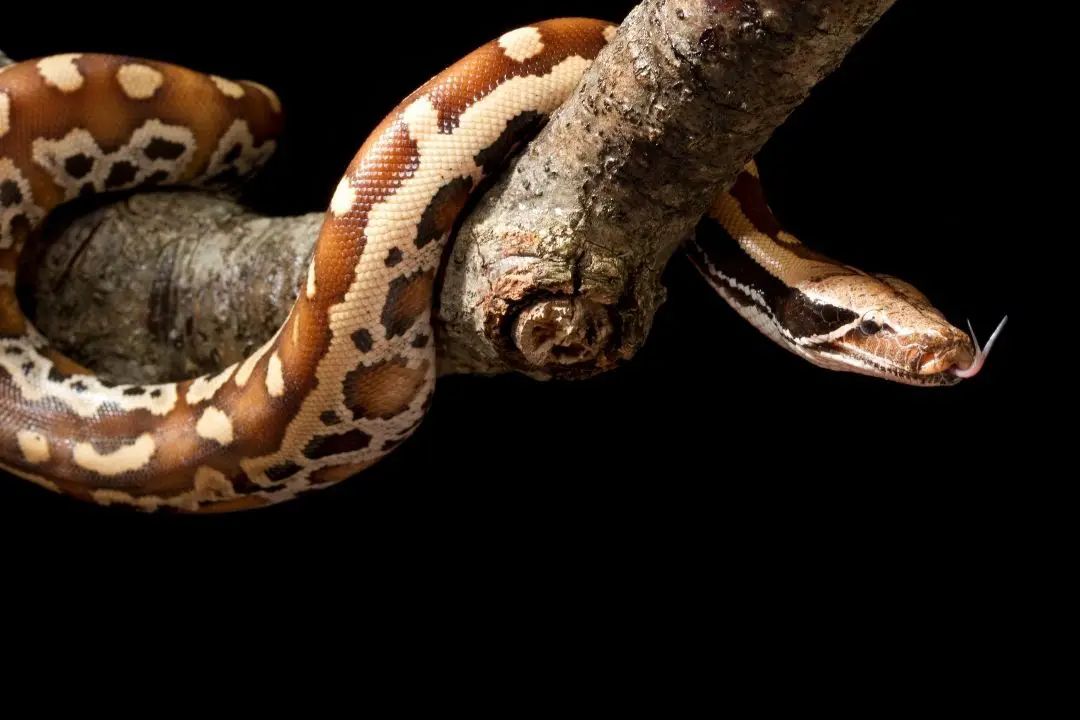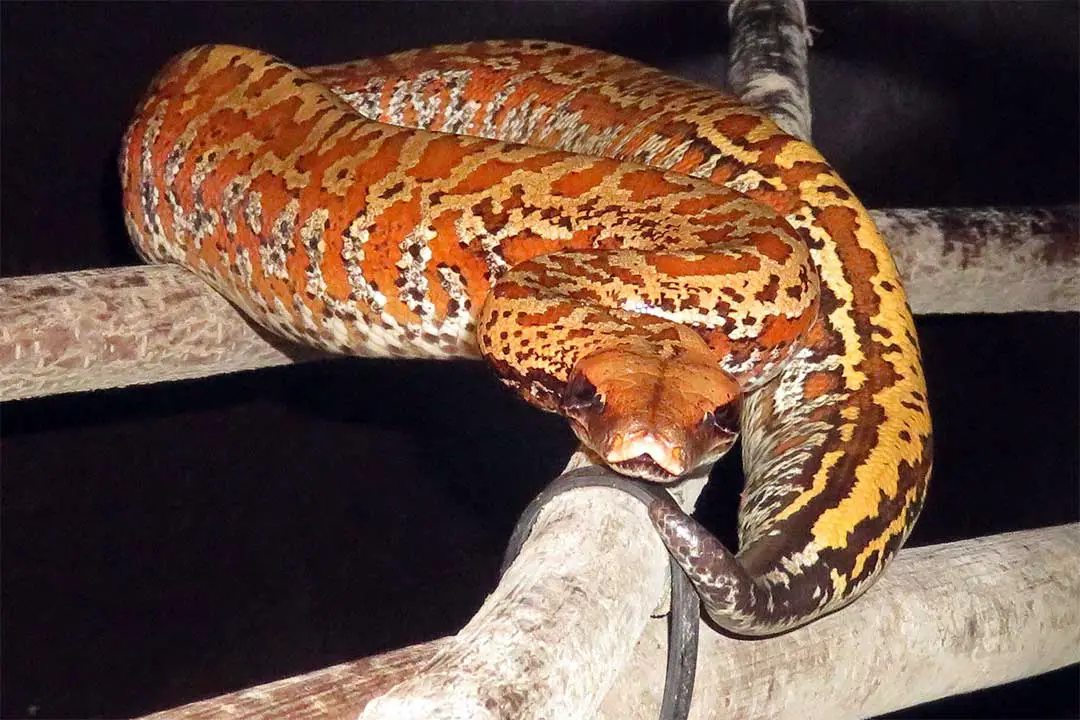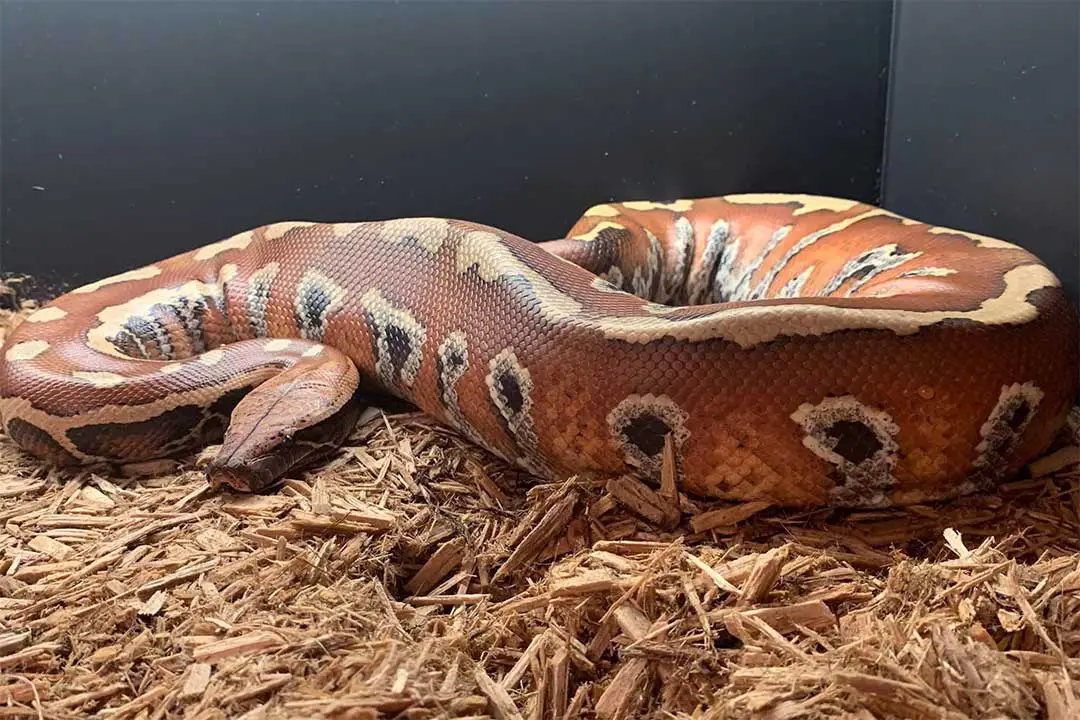The blood python (Python brongersmai) is an incredible animal. These snakes are slowly losing their bad reputation and becoming more popular in the pet trade. If you want your first pet snake, you may be wondering if blood pythons are good pets for beginners.
As a general rule, blood pythons are not good pets for beginner snake keepers. These animals require very specific conditions and a good knowledge of snake behavior to keep. They are also very heavy animals that need more specialized enclosures.
Size
Blood pythons stay fairly short for a snake. Most animals won’t get much over 6 feet, though some very large females can be over 7 feet.
The real issue comes from the girth and weight of these animals. They can weigh over 20 pounds. They are also incredibly strong.
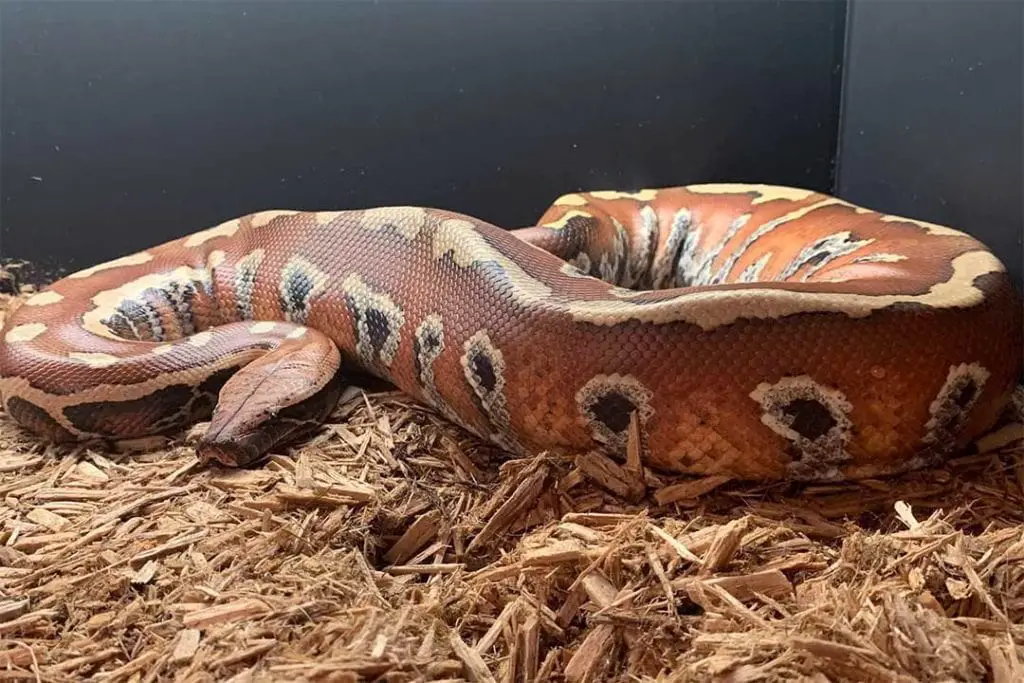
Everything you need to know about caring for Blood Pythons in captivity:
Read our Blood Python Care sheet (Complete Setup & Guide)
If your blood python mistakes you for food, it will try to constrict you. This can be difficult to break out of on your own thanks to the weight and strength of this species.
The size of the blood python also means that they need a much larger enclosure. You want an absolute minimum of 7 feet of floor space so your snake can stretch out.
Larger specimens will possibly need a custom cage. A beginner might not see the signs that your snake needs more space.
Conditions
These snakes need very specific conditions to be docile. Many breeders note that these snakes become irritable or snap if the conditions are off. If the temperature is even a few degrees too hot, your snake will be more defensive.
If it is too cold, your blood python cannot digest its food and risks having its last meal rot. The humidity needs to stay in a fairly narrow range as well.
These snakes are native to swampy areas and spend most of their time in the water to ambush potential prey. They dehydrate easily and require much more specialized care than a species native to a drier climate.
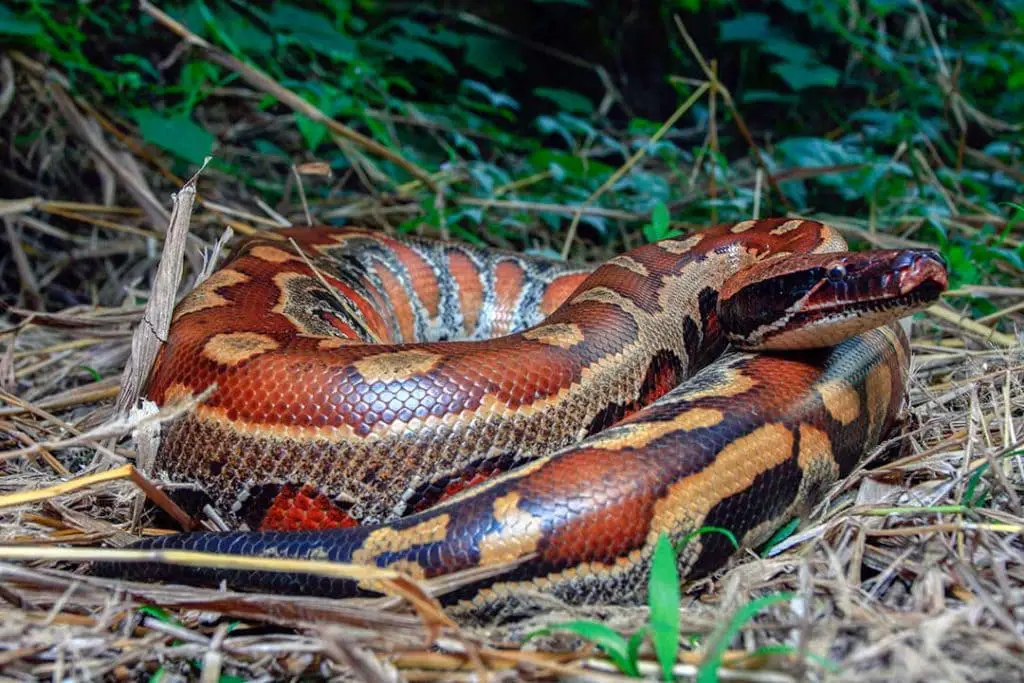
You will need to know how to maintain a fairly narrow range of temperature and humidity for your snake. This makes the species more of a challenge.
They also require a much sturdier set of decorations in their enclosures. Blood pythons are very large snakes and they need sturdy hides, branches, and other items to offer enrichment and shelter. If your enclosure feels too empty, your snake will end up stressed out.
Temperament
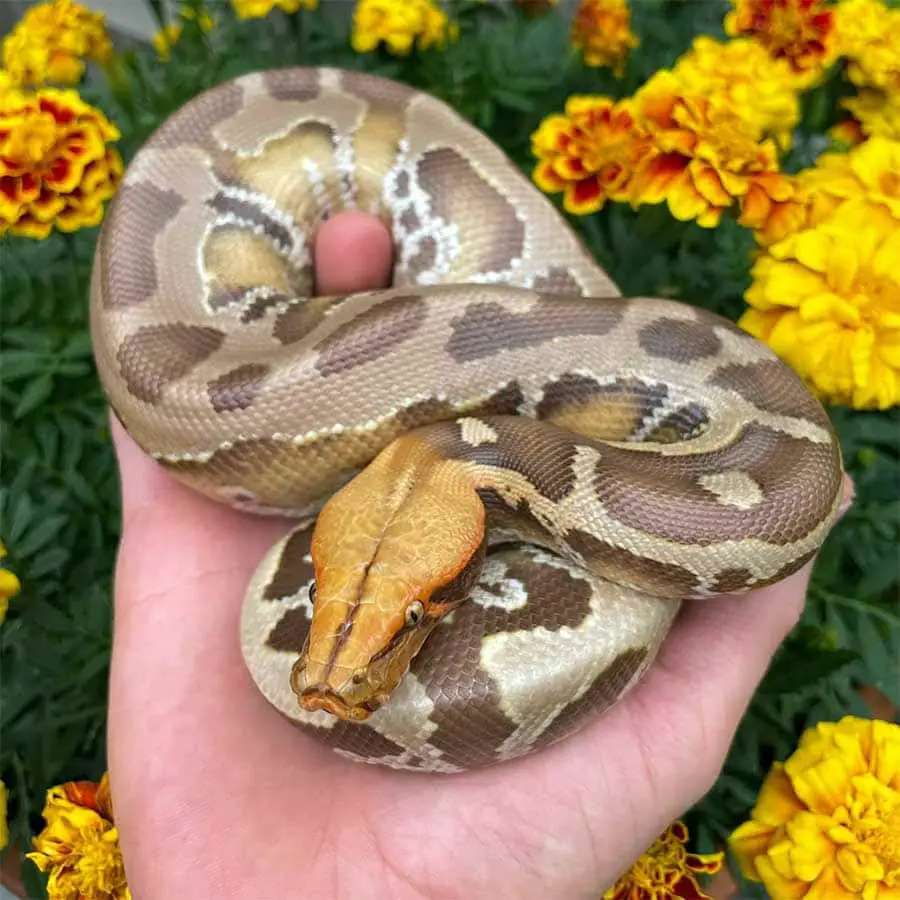
Blood pythons that are handled properly grow into snakes that are typically docile and easy to handle. As adults, a captive-bred animal will be calm and relaxed during handling.
However, this relies on understanding snake body language and behavior. Blood pythons are very capable of causing injuries as adults.
They have very sharp teeth and they will bite you if you don’t back off when they want to be left alone. They are also very strong animals.
As juveniles, they are flighty and will try to jerk away from you. Even if you mean well, it is easy to drop them or frighten them to the point that gaining their trust is difficult.
They require a great degree of patience and an understanding of how juvenile snakes act before you can really hope to work with them.
Handling is essential for this species. If you need to take your snake to the vet, a snake that isn’t used to being handled will be stressed and fight back.
Even something as basic as cleaning the enclosure can become a battle against a 20-pound animal that wants to be left alone. It is recommended that you learn about snakes and pythons from easier species like corn snakes, kingsnakes, or ball pythons. Blood pythons’ only real benefit over ball pythons is that blood pythons indicate poor care more often than ball pythons and blood pythons rarely refuse to eat.
Availablity
Another big factor for this species is how they are acquired. These snakes must be captive-bred and raised if you want a docile animal. Animals that are wild-caught will rarely calm down.
These snakes are typically reactive and hard to predict even if you have good experience with snakes. Wild snakes taken into captivity face long transportation that can injure and stress the snake.
They have bad experiences with humans and it can be hard to convince snakes that you are different. Captive-hatched snakes have the same issues.
These animals are from eggs laid by captured wild females. If you want a blood python to be a good pet, you need to make certain that you are getting your snake from a good source.
You want a breeder who produces snakes only from captive animals. You want to look for someone who breeds for temperament and health.
Good breeders of this species only allow snakes that deal well with captivity to breed. If you are not experienced with snakes and the reptile trade, you can easily miss the signs of a less-than-ideal breeder.
This is particularly true in settings like reptile shows where you might not know the questions to ask to discover where your snake came from.
Conclusion
Blood pythons can be great pets, but they are not a snake that is easy to keep. They require specific conditions to thrive. You need experience with snakes to know how to care for them properly.
You also need to know how to select a snake that will be a good pet.
Otherwise, you risk having a snake that lives up to all the bad stereotypes of the species.
If you have any questions or comments, please leave them below!
